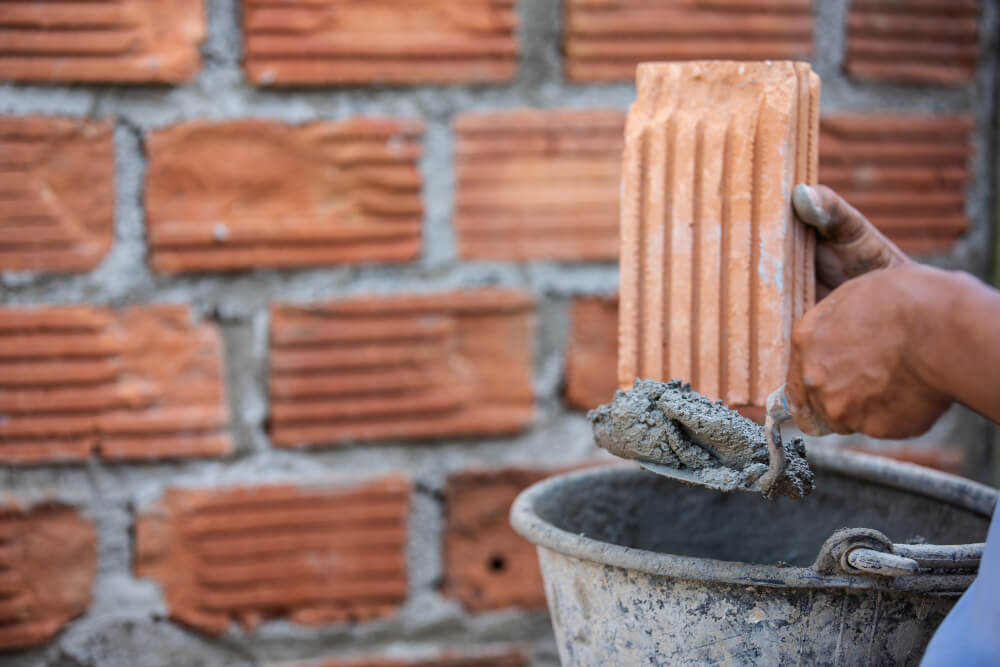A Homeowner’s Guide to Repairing and Maintaining Brick Walls

Bricks are one of the most common building and landscaping materials. They provide significant foundational strength to any structure and add an aesthetic charm when exposed. While they are indeed one of the most durable materials out there, this does not mean that they don’t require maintenance and repairs from time to time. Like all structures, brick walls can face structural wear and tear over time and repairing or maintaining them is essential to prolong their lifespans.
In this post, we take a closer look at some of the different common issues that you are likely to experience with brick walls and how you can resolve them.
Common Issues with Brick Walls
Some of the common issues that you might experience with brick walls include:
- Cracking: When subject to heavy loads over extended periods of time, even the most durable materials, such as brick, can buckle and develop cracks.
- Mortar Deterioration: The individual bricks that make up a brick wall are often connected using mortar joints. However, these joints can deteriorate over time, resulting in gaps or crumbling mortar that can compromise the structural integrity of the whole wall.
- Water Damage: If not properly sealed or waterproofed, brick walls might experience water-related damage such as mould growth and freeze-thaw damage during winter months.
- Erosion: If exposed to the elements, brick walls may also experience erosion on the surface, which can alter their visual appearance.
Brick Wall Maintenance
Maintaining any brick walls you might have at home is something you should do regularly to ensure that minor issues don’t evolve into significant structural ones. As part of your regular maintenance, conduct a thorough visual inspection of your brick walls to identify any issues that might present themselves. Then, determine whether the issues are ones that you can resolve on your own or if they are complex enough that you will need to engage a professional.
Repairing Common Issues
DIY repairs will often be sufficient for more common issues, and it may not be necessary to engage a professional. For instance, issues such as mortar deterioration and water damage can often be easily resolved. To repair deteriorated mortar, simply remove any deteriorated or loose mortar using a chisel before applying a new batch of freshly prepared mortar to fill in any gaps. Similarly, for water damage, simply identify any areas where water might be penetrating and seal up those gaps in the wall.
However, for more significant damage or issues such as structural damage or cracking, it may be wise to engage a professional to ensure that you don’t jeopardise your own safety with an inadequate repair.
Get Your Bricks from Fulton Brickyard
If you want high-quality bricks or pavers for your next building and construction project, Fulton Brickyard can help. We are the number one supplier of Boral bricks, pavers, and other paving and landscaping supplies in Melbourne and the surrounding areas. Get in touch with us today for your free consultation!
Image by jcomp on Freepik
- Are Sandstone Paver Walkways Safe for Pets and Children?
- Artificial Turf vs Natural Grass: Which is Better for Your Yard?
- Can You Pressure Wash a Wooden Deck?
- The Benefits of Permeable Pavers in Stormwater Management
- The Importance of Proper Drainage Planning for Your Backyard or Garden
- Common Mistakes to Avoid When Cleaning Sandstone Pavers
- How to Repair Broken or Sunken Pavers
To learn more about the outstanding benefits of our expressive, evocative,
and natural granite pavers call us today on:
